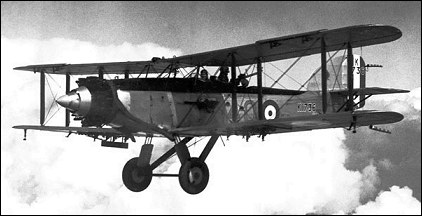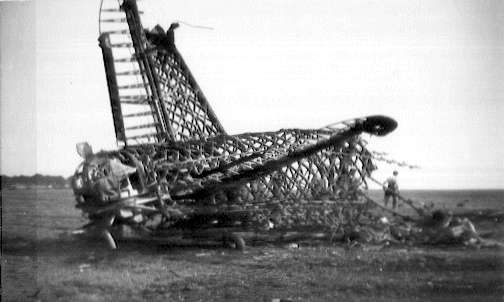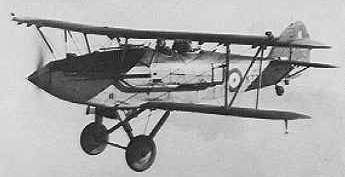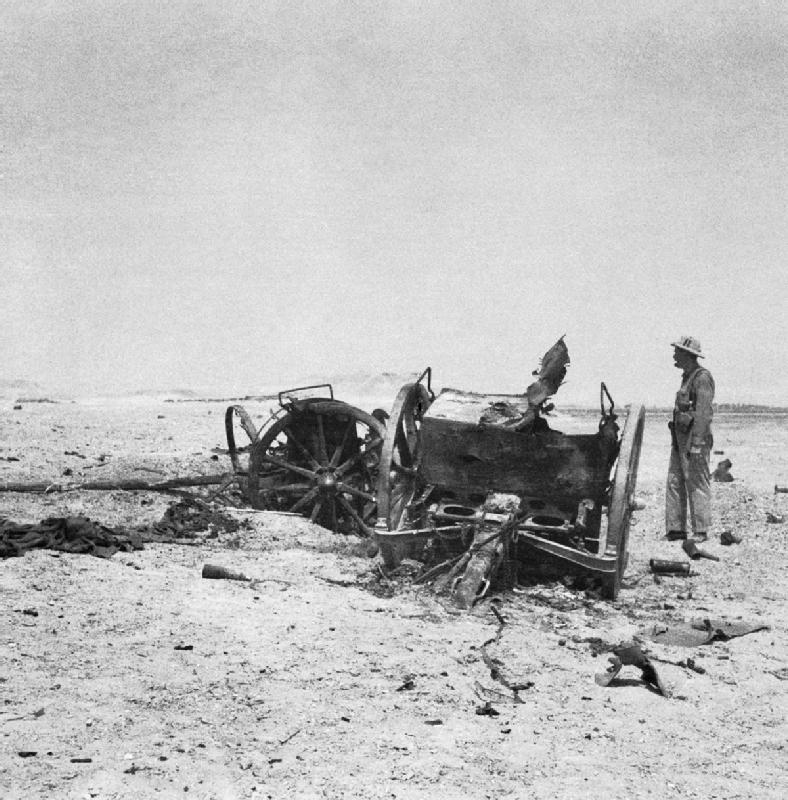The whole of the Middle East has a very complex and turbulent history. By World War Two it was a series of countries that were relatively new constructions set up after the collapse of the Ottoman Empire. One of these new countries was Iraq, first granted independence in 1932. From 1933 to 1941 Iraq had six coups and many religious uprisings. The last of these, in April 1941, put Rashid Ali al-Gaylani in power as Prime Minister. Rashid Ali was extremely anti-British: despite this Iraq was allied to Britain, whom had been training and equipping the Iraqi armed forces as well as pouring funds into the country to help develop Iraq’s infrastructure. The British also supplied assistance with developing the country’s oil resources. At the time the Middle East produced a fraction of the world’s oil supplies with the US being the major producer. Despite this, even Iraq's limited output would have solved most of Germany's oil problems.
 |
| Rashid Ali al-Gaylani |
Number 4 Flying Training School (FTS) was based at RAF Habbaniya, with a motley assortment of aircraft. On strength it had eighty four airframes, which included six Gloster Gladiators, twelve Hawker Audaxs, seven Fairey Gordons, twenty seven Airspeed Oxfords and twenty five Hawker Harts. The largest bomb any of these aircraft could carry weighed only twenty pounds. Over half the aircraft couldn't even manage that.
As the situation worsened a cabal of junior flying officers and instructors turned their attention to arming these aircraft. This initiative was met with resistance by the commanders of the base. However the junior officers doggedly persisted, even going as far as to ignore direct orders to increase their bomb loads.
On the night of April 29th the Iraqi army moved out on "exercise". This exercise saw them entrenched by the morning of the 30th on the plateau overlooking RAF Habbaniya, with tanks, artillery and several thousand men.
The Base Commander then spent the next two days trying to obtain clear orders from his superiors, either the RAF or the Foreign Office. However both institutions gave him the run around. Then on May 1st a telegram arrived from Winston Churchill. It simply read:
"If you have to strike, strike hard."
The RAF would launch an all-out offensive against the besieging Iraqi Army at first light the next day.
 |
| Fairey Gordon |
The Iraqis responded immediately with a storm of anti-aircraft fire. The Germans had supplied light AA guns to the Iraqis. Meanwhile the Iraqis began to shell RAF Habbaniya. The AA fire was so intense that every aircraft overhead was hit. Nine of the ten Wellingtons were damaged and put out of service for repairs when they landed.
The tenth had one of its engine damaged and was forced to land at RAF Habbaniya’s airfield. Despite efforts of the ground crew to tow the aircraft to safety the Iraqi Artillery ranged in on it and set it on fire. During that first flight one Audax returned to base with 52 bullet holes.
 |
| There are photo's of the Wellington, but I couldn't find any on the, this one is from a different incident |
As well as the shelling, the Royal Iraqi Air Force joined in the attacks on RAF Habbaniya. Normally a number of Iraqi Gladiators would strafe the airbase and then a reconnaissance over flight from S.79 Bombers at 20,000 feet would follow. On one occasion, seeing the S.79s coming in, a pilot managed to scramble a Gladiator and claw up to that altitude. The Gladiators didn't have oxygen systems fitted; gasping for breath the pilot caught up with the S.79 and pressed the fire button on his control column. All four of his guns had iced up and jammed.
During the first day in over 14 hours of combat the 39 pilots had flown in excess of 193 sorties, with 22 aircraft damaged or destroyed and 10 pilots put out of commission, including one who developed appendicitis at midday.
The Gordon bombers had developed new ways of terrifying the Iraqi soldiers. They had started bombing from an altitude of ten feet! The pilots disarmed the safeties on the bombs and fitted seven second fuses. This meant they could just get outside the blast radius of the bombs going off. This was used to great effect to knock out an Iraqi AA gun that had been infiltrated behind a brick shed under the flight path for the runway.
On the third day, four Blenheim fighters appeared overhead. These were valuable reinforcements sent to aid the base from Egypt. However, the pilots hadn't been briefed on the situation and carried out normal landings, presenting a perfect target for the Iraqis! As luck would have it a flight of Audax bombers were airborne, saw what was about to happen and commenced a very close bombing run to keep the Iraqis pinned down. One Blenheim actually flew through the dust cloud kicked up from an exploding 250 pound bomb! When on the ground they saw the nearest airmen racing towards them directing them to safety, the Iraqi soldiers shooting at them with small arms added to the message. Luckily despite some superficial damage all four Blenheims were saved.
 |
| Hawker Audax |
Whilst arming and preparing these aircraft the situation changed again. The Iraqi soldiers on the plateau - demoralised from suffering round the clock bombing for five days - routed; leaving behind most of their weapons they fled up the main road en masse, their morale shattered. The two columns of Iraqis met and caused a massive traffic jam preventing either column from moving. All this happened as the RAF strike force arrived overhead and began bombing.
 |
| Iraqi Position on the plateau |
Flying school huh.
ReplyDeleteWas it teachers and students flying or just the teachers?
I understand they tried to keep some of the best pilots instructing hoping better teaching kept more students alive to become veterans. Meet one old guy in the local supermarket talked about flying and discovered he had been a flying instructor and had been offered hos choice of postings to do oneore tour. He picked to be assigned to 617 squadron. Was oked but ended up flying SOE Liberators for Southeast Asia HQ.
CFI's Rule.
It was any available pilot. One Pilot was assigned t the Bagdhad embassy as an RAF military attaché. On the day before the embassy was besieged he left, and drove all night to RAF Habbaniya, just so they could get an extra airframe in the air.
DeleteLots of the students went up as air gunners or bomb aimers. Those that couldn't do that manned auxiliary jobs like filling ammo belts by hand! Seeing as a Gladiator could use a few hours work in a single burst you can imagine how daunting a task that was. Plus the machine used to insert the cartridge into the belt had a nasty habit of loading the users finger into the belt after severing it. So they had to stay alert for hours on end.
For once, I would agree with the Nazis on funding the Iraqis just so they could kick the fucking shit out of these Imperial sluts.
ReplyDeleteMe thinks you're miss-reading the situation.
DeleteThe imperialistic claims are curious, considering all the British had was rights to build a pair of bases, but otherwise stayed out of running the country. We did poor large sums of money equipment and technology into Iraq to help develop their infrastructure.
But when several thousand men show up outside your front door and tell you to stay inside and be our prisoner, well a fight is kinda inevitable. And go have a look what happened to Iraq after the war. Once the situation had stabilized and the Iraqis were able to look after themselves the British left.
Hardly sounds like the Imperialistic behaviour of old does it?
Meet one old guy in the local supermarket talked about flying and discovered he had been a flying instructor.
ReplyDeletemeizu m2 note review
meizu mx5 specs
xiaomi mi4i review